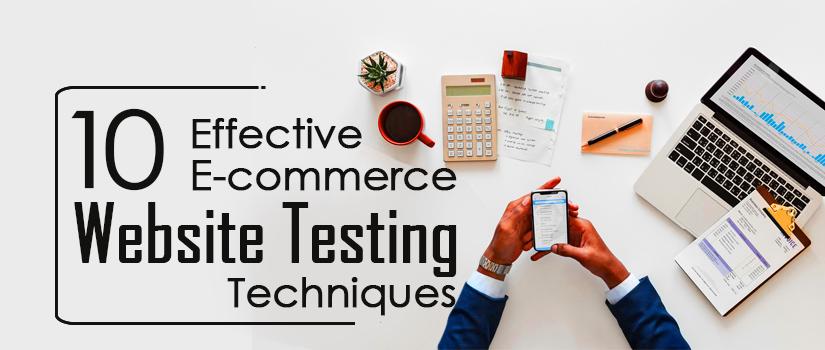Developing an e-commerce website is a complex process. From defining the purpose, design to identifying the ways in which its user will make the payment, developing a website requires a lot of efforts. But, all those efforts might go in vain if the website is solely developed and no step is taken to ensure its proper functionality.

Testing an e-commerce website is a crucial step that helps ensure that it continues to deliver the required performance and keeps its users happy. It is also important to be sure about software’s reliable performance, optimum quality and capacity utilization. Similar to its development, testing an e-commerce website demands the tester’s proper attention. Some of the common techniques that can be used for testing an e-commerce website are as mentioned below:
1. Compatibility With Different Browsers
This form of testing is conducted to ensure that the product being developed offers provide proper support for early browsers and has browser specific extensions. While conducting this testing, it is also important to verify that it is able to cover main platforms like Linux, Windows, Mac etc.
2. Page Display
Testing the product for this feature helps in verifying any incorrect display of pages, runtime error messages, poor download time of a page, dead hyperlink or font sizing error. Identifying this form of error helps in ensuring that all such errors are rectified on time.
3. Session Expiry
This includes testing the website on parameters like the duration for which a session lasts, its storage, etc. Testing this feature is important to ensure the maximum safety and security of the user’s confidential data like bank account details, passwords, etc.
Also Read : 7 Features That Have To Be Tested In An E-Commerce Website
4. Usability
When you own an e-commerce website, it is important to ensure that it proves useful to its users. Test to ensure that it does not have poor site navigation, performs when someone navigates through the catalogue and is also available with complete support, in case the need arises.
5. Analysis of Content
One must ensure that the content available/visible to the end user is authentic and not at all misleading. This implies that the website should be thoroughly checked for the presence of any offensive or deceptive content, copyright of the images present on the website, possibility of personalizing the content, etc.

6. Data Backup and Recovery
Any e-commerce business runs on the basis of data availability. Therefore, it is important to ensure that there is no risk of data loss. In case of any data loss, there should always be a possibility of recovering the same. The risk of backup failure should not exist in case of e-commerce website.
7. Performance of Shopping Cart Features
The functionality of shopping cart is the utmost important part of an e-commerce website. When testing an e-commerce website, one must check the performance of its shopping cart in terms of adding or removing the items, processing of order and payment, tracking order, etc.
8. Performance for Global Audience
The website should never be limited to serve a particular set of audience. Making it viable to use for a mass audience by offering features like language support and display, its sensitivity to different cultures and regional accounting can make the website a path towards gaining a large customer base.
9. System Integration
The extent to which a website integrates with the system is an important factor to consider when developing an e-commerce website. To verify this, the testing team needs to check and confirm the data interface format, interface frequency and volume capacity, updates and performance.
10. Login and Security
Testing an e-commerce website requires one to test it on several grounds like login capability, access control, ability to handle web attacks, transmission of information and viruses. It is also important to ensure that there is no breach of data or threat to the user’s data when he/she is using the website.

Conclusion
It is important to remember that performance testing is the key to success for any e-commerce website. Conducting this form of testing ensures that there is no delay in its response time or handling any requests raised by the user. Remember, launching an e-commerce website is not an end; it is rather a beginning to delivering the best-in-class experience to the user that can be ensured only by conducting regular testing and maintenance.
Recommended for You : How to Test an Ecommerce Website: Points To Remember


